This was originally part of the article on the EOS-M discontinued, but then it grew to the point it made sense to unpack it into its own article. You can read about the EOS-M being quietly discontinued here. Be warned, there is not a lot said in this article that is pro-Canon, but I’ll do my best to be objective.
Personally, I had almost every single EOS-M camera (don’t get me started on the complete disaster the M3 was). The only ones I never had were the M50 and M50 Mark II, amusingly, the most successful EOS-M cameras. I took easily over 200,000 images with the M’s and actually enjoyed them quite a bit. The size and weight had an appeal to me, and it was a system that I could manage to fit in my travel gear without much hassle.
The EOS-M system and its birthing pains, mistakes, and accomplishments helped Canon move to the fantastic mirrorless RF system that we have today. The EOS-M system also allowed Canon breathing time to develop the RF mount system, and transition users from the EF mount all while maintaining their dominant market share. Regardless of what you may think of the system, it allowed Canon to do an industry transition that no one else accomplished so well.
The Covid-19 factors
The writing was always on the wall for the EOS-M system once the RF system was announced. But it could be that Canon never planned on ending it this way. Not too long after the announcement of the RF system, the world experienced a pandemic disruption like it’s never had since the Spanish Flu in 1918-1919. Consider that the M50 was announced in February 2018, the EF-M 32mm came out in September 2018 and the M6 Mark II came out in August 2018. The COVID-19 pandemic that really halted everything happened in early 2020. Even after it was followed by the global supply shortage. This could have certainly made it so that Canon most likely triaged its production and R&D and canceled any further EOS-M plans that Canon may have had.
Canon may have decided to only produce cameras that had high profitably and also the best future outlook (aka RF) during this time. Also with all the engineering talent focused on the RF system, including software developers, there could have simply not been enough brain power to include the EOS-M system development. Particularly during the 1 to 2 years of the pandemic when the engineers and developers were the most disrupted. The loss of person-hours and if everyone prior was operating at full capacity, something has to give. Being forced into painful decisions between RF and EOS-M we all know realistically which system would have won out. Even as a total EOS-M fanboy, I would have wanted Canon to focus on the RF system.
There are other considerations that seem to identify that Canon may have had different plans for the EOS-M. The firmware that Canon settled on for the EOS-M was Powershot designed starting with the M3 (which is why that camera was a steaming pile of … ), and models of the cameras from the M3 onwards were designated as Powershot cameras and not designated as their digital stills cameras. The EF-M 32mm was without a doubt, the best APS-C lens that Canon has ever made. The M6 Mark II was arguably the most advanced APS-C camera that Canon had ever developed at the time (and the R7 still doesn’t have all the features that the M6 II camera had). All this makes it so that it appears as if Canon wasn’t walking away from the system back with the introduction to the RF system.
So prior to early 2020, Canon may have had the best of intentions of keeping the EOS-M system going. I had always partly assumed that Canon’s future plans were to give the cameras a Powershot identity and keep developing them as Powershot advanced cameras.
The Canon Transition or lack thereof
While professionals never used the EOS-M system there were millions of people that purchased cameras and perhaps even lenses for that system. Before anyone suggests that there are only 1.6 lenses per camera, that’s correct – but how many users purchased more than one camera body over the 11 years the EOS-M system was out?
The investment in the EOS-M system was never that costly, I doubt that most people got close to the cost of an R7 camera body, but it is these people who will now start deciding on a transition. That is not an easy decision either as they have to decide if Canon is the right company to stick with, if their smartphone is now good enough, or if perhaps Fuji or Sony is a better option.
While I could never swap to Sony. (Ever!) I could see a future where I had a Fuji camera and a small ecosystem of primes and zooms. With a rich lens system and capable third-party lens support, there are tons of options to choose from that simply don’t exist for Canon and may not exist for a decade or more, if they ever do.
And here’s the rub from the Canon EOS-M users’ perspective – it feels like it’s too soon. The RF-S isn’t mature enough. It’s amusingly suffering from the same problems as EOS-M – as many camera bodies as lenses, and the RF-S system is only 15 months old. That’s an achievement on its own. Maybe if the RF-S 10-18 was already shipping and an RF-S 32mm announced, perhaps some third-party announcements, it would feel different. But the problem now is, that people wanting to make that jump from the EOS-M will have to decide if a partly fleshed-out RF-S system with little concrete future information available is the right place to go.
The lack of Sigma and Viltrox lenses for the RF-S mount is huge right now. For those who will proudly write, we can use EF-S lenses. Really? That’s not really an option for those coming from the tiny EF-M lenses. Especially when these EOS-M users could jump to Fuji or Sony as easily as Canon’s RF-S system, and get those same Sigma and Viltrox lenses that they used on the EOS-M.
I’ve always known that this was going to be a problem for Canon, I wrote about it a lot on CanonNews – and yeah, it’s still a problem. Canon is trying to execute two major course corrections in its camera division, and that’s from EOS-M and also the EF system, and both of them to the RF system. The EF to RF migration was done excellently but both of them have different problem domains. The EOS-M feels like a non-existent plan.
When it comes right down to it, I’m not Canon, I can’t speak for them, and I certainly don’t know all the pros and cons of the decisions that Canon has come up with. Craig allows me to write here and has encouraged me to share my opinions on all things Canon. As a matter of fact, he specifically told me to write about the not-so-good stuff. I do know, or hope, that Canon didn’t make this decision easily, and that it was a difficult decision, perhaps forced by the global situation over the last 3.5 years.
That all being said – which EOS-M camera and lenses were your favorite kit? Mine was certainly the EOS-M M6 Mark II and the EF-M 18-150, 11-22 and 32mm. It was also a modified camera to take both infrared and color images. It was pretty much for me the perfect little travel kit that could take amazing images in any lighting conditions and that camera body had features that Canon still hasn’t put into the RF system to this day. But there was something special about the original EOS-M and the 22mm as well, something that Canon will have a difficult time replicating on the RF mount.
|
When you purchase through links on our site, we may earn an affiliate commission. Here's how it works. |



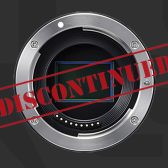
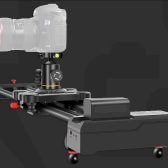
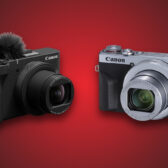
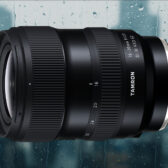
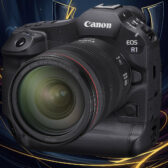
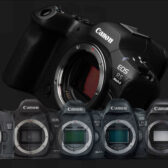

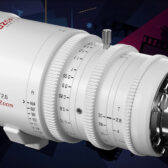

I'm sorry, I couldn't quite hear what you said; I had something crazy in my ear.
I would like to see Canon come out with a spiritual successor like a R9 or R11 with the M6 body size as I do miss the compact sub 70mm high form factor. Also toss in a RF-S pancake lens or a 22mm 1.4 please.
size and portability or even lenses. The second option would be Fuji but they discontinued the X-E4 and the rest of their cameras are big.
I think Canon could have kept the M system going by simply reusing all the R APS-C camera internals, except the mount. R cameras can never be as small because of the much bigger mount.
The R100 could have been designed that way but they went with the bulky grip + EVF route. Even tho the RF mount is much bigger, the cameras could be almost as small as the M ones, only a couple mm taller (in the M100 the mount still have some space around it).
I dunno why Canon is slow on converting EF-M lenses....They actually spent effort to bring newly designed RF-S10-18 is surprising. When re-make the mount of 11-22 will do.
First, they had no EVF or OVF. I just can't use the LCD in bright sun. When the M 5 came, I got mildly interested , but there were simply not enough interesting lenses for it, and the system had stopped growing. Could be that I had expected a Fuji APS/C equivalent from Canon.
Maybe I was wrong, but I have no regrets. There are, in my opinion, some good alternatives (not from Sony!).
It was more a 100D or T100 than M100.
The EF-M22 f/2 is still one of my all-time favorite lens to this day, and for now, the only reason I haven't yet chucked the M50.
I wish Canon had planned a better transition and that M lenses could have been adapted to R. Regardless, the M-series will be missed.
We were all waiting for it, it wasn't released in the USA (obviously the one time you can state Canon USA was smart), so we all had to order it via Japan, we had online tutorials rolling on dpreview on how to navigate third party shippers to ship to USA / Canada / etc.
and that's what I can remember off the top of my head something like 10 years after the fact.
Canon could have corrected most of that via firmware but instead they did the M6 and M5 cameras that fixed all those problems and delivered a far superior camera(s)
Apart from that, RF seems to be the only logical future of Canon's cameras.
Anyway, for me it's clear now : after EOS M, there won't be any APS-C "small" camera I would buy and small APS-C system I would invest in. And even not that small in fact...
Think : EOS R8 is smaller and lighter than EOS R7 and if I was to choose between those two cameras I certainly wouldn't even bother about R7 !
Also : I wonder why you used past tense (i.e. "The EF-M 32mm was ...", "Mine was certainly the EOS-M M6 Mark II..."). I hope yours are still working great ! Unless you sold them of course, so they are probably working great for someone else :D ...